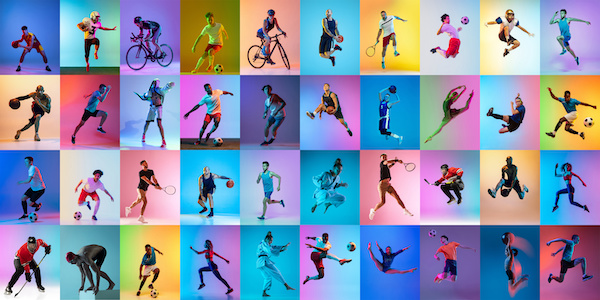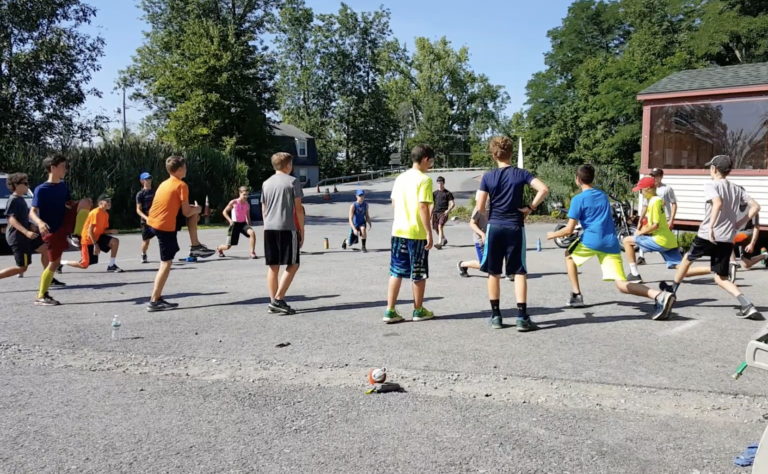STAGE 2 - Participate, Develop, Challenge
Chronological Age: 10-18 and Late-Entry Masters
Target Audience: Youth and Recreational Rowers
Stage 2 is for youth and late entry masters rowers participating in recreational community rowing programs. If the rower has developed a love for the sport, basic technique, and a desire to pursue competitive rowing, they can transition to Stage 3. Alternatively, a Stage 2 rower can transition to Stage 5 (Row for Life) if they are not interested in pursuing a more competitive route.
Stage 2 rowers are still at an early developmental stage. Because rowing has a long development arc, success at this stage does not necessarily predict success in future stages, and vice versa. As a result, coaches should prioritize a positive athletic environment focused on participation, resiliency, and athletic and social development.
The overlap in chronological age between Stage 1 and Stage 2 rowers is due to the variance in developmental age among athletes. A middle school rower with competitive aspirations can begin Stage 2 training as early as age 10 and then shift to Stage 3 at 13. This is more common amongst athletes assigned female at birth, who tend to develop earlier and more rapidly than athletes assigned male at birth until age 13. However, early development has no bearing on an rower’s ability to reach an elite level of performance as an adult. Rowers who enter Stage 2 as tweens or young teens do not have less potential than athletes who started younger.
Concepts

Create a fun environment that matches skill and interest
The primary concept for Stage 2 is personal enjoyment and development of future abilities. Coaches should make every effort to create a space to enjoy the sport, and remove competition and comparison as the primary driver for program design and decision-making.
Coaches need to appreciate the dynamic between individual maturation rates and long-term performance. Rowing can be more challenging for “late-bloomer” Stage 2 rowers; coaches must understand that early competitive success is not a predictor of future success. They should prioritize skill development over competition, and the latter should be used primarily as a way to test and apply their skills in a fun and exciting way. Coaches should provide a variety of participation opportunities for Stage 2 rowers to keep them engaged with the sport.

Participate in multiple sports for continued motor and physical development
Stage 2 rowers should continue to participate in multiple sports and avoid sport specialization. Coaches should integrate ball sports and other skill activities from theAthletic Motor Skill Competencies (AMSC) during land training (See Stage 1 for details) and create training programs that enable athletes to play multiple sports.

Participate in structured, and ongoing training program (as opposed to participating in "Open Gym")
Strength and conditioning training should be used as a form of physical education, not as performance training. While the “open gym” model was appropriate for free play in Stage 1, Stage 2 rowers will need more instruction and structure for a safe and effective strength training environment. Coaches should provide ongoing guidance and supervision for all strength training activities. See below for more information about strength training with Stage 2 rowers.
Foundations
- be a good teammate
- create a positive team culture
- communicate with coaches
- appreciate and respect other teams, volunteers, officials, and others involved in rowing
- process challenges and recognize failure as a natural part of personal growth.
PROVIDE SUBSTANTIVE AND APPROPRIATE CHALLENGES
As a Stage 2 rower’s skills improve, drills become beneficial challenges to improve specific parts of the stroke. Coaches should start with simple drills and ensure mastery before moving onto more complex drills or trying to perform the drill with the full boat. Other challenges include semi-competitive activities, i.e., rowing at the slowest rate, rowing with the best technique, and rowing taking the fewest strokes over a specified distance.
OFFER VARYING KINDS OF COMPETITIONS
Stage 2 rowers can compete at the local or regional level. Coaches with suitable equipment and number of rowers also can design buoyed obstacle courses or skill exhibitions onat their home waterway, thereby removing the need to travel to compete.
Coaches should introduce a variety of frameworks to highlight the Stage 2 rower’s positive development. Competitions should include “individual vs. personal best” or “group vs. challenge,” not just “peer-vs-peer.” Tracking personal records, improvements on the water/erg are good examples of different measures of success and growth.
Stage 2 is the jumping-off point for the wide variety of paths rowers might take in the ADM. A Stage 2 rower may move to Stage 3 at 14 if joining a high school program, spend all of high school in Stage 2 then move to Stage 4 as a walk-on college athlete and/or high performance hopeful, or move to Stage 5 after high school as a mentor (coach, official, etc.) and/or rower for life.
Foundations
Coaches can think of development using five pillars: physical, psychological, social, technical, and tactical.
PHYSICAL
Stage 2 rowers should build on the motor coordination developed in Stage 1 and focus on basic athletic movement patterns – particularly during land training. They should master unloaded movement before progressing to external loading, with an emphasis on fun and diverse patterns. Land warm-ups are effective opportunities to develop these physical skills. See below for more information about strength training with Stage 2 rowers.
PSYCHOLOGICAL
Stage 2 rowers should be gradually introduced to more psychologically challenging situations, such as competitions. Coaches should provide guidance to help facilitate the development of positive mental skills. All Stage 2 rowers will benefit from these early positive, formative experiences.
SOCIAL
Coaches should create activities which teach the athletes how to:
- be a good teammate
- create a positive team culture
- communicate with coaches
- appreciate and respect other teams, volunteers, officials, and others involved in rowing
- process challenges and recognize failure as a natural part of personal growth.
TECHNICAL SKILLS
Coaches should teach Stage 2 rowers how to discuss and evaluate rowing technique using a general technical framework. They should provide opportunities for Stage 2 rowers to track and observe technical improvements in order to build the athlete’s confidence in and outside of rowing.
TACTICAL
Being part of a team can be challenging for Stage 2 rowers, as they are learning to simultaneously develop both their personal skills and the degree of effective teamwork required for our sport.. Coaches should support Stage 2 rowers while they embrace this challenge, as it teaches critical lessons applicable to rowing and beyond.
PROVIDE SUBSTANTIVE AND APPROPRIATE CHALLENGES
As a Stage 2 rowers’ skills improve, drills become beneficial challenges to improve specific parts of the stroke. Coaches should start with simple drills and ensure mastery before moving onto more complex drills or trying to perform the drill with the full boat. Other challenges include semi-competitive activities, i.e., rowing at the slowest rate, rowing with the best technique, and rowing taking the fewest strokes over a specified distance.
OFFER VARYING KINDS OF COMPETITIONS
Stage 2 rowers can compete at the local or regional level. Coaches with suitable equipment and number of rowers also can design buoyed obstacle courses or skill exhibitions on their home waterway, thereby removing the need to travel to compete.
Coaches should introduce a variety of frameworks to highlight the Stage 2 rower’s positive development. Competitions should include “individual vs. personal best” or “group vs. challenge,” not just “peer-vs-peer.” Tracking personal records and improvements on the water/erg are all good examples of different measures of success and growth.
Stage 2 rowers benefit from basic strength training as a form of advanced physical education. For the Stage 2 athlete interested in progressing to Stage 3, strength training is beneficial for the athlete’s foundational physical development. For other Stage 2 rowers, strength training is an activity that can be used for lifelong personal fitness.
Coaches can use a gym or the boathouse to teach basic movements.
Stage 2 is the jumping-off point for the wide variety of paths rowers might take in the ADM. A Stage 2 rower may move to Stage 3 at 14 if joining a high school program, spend all of high school in Stage 2 then move to Stage 4as a walk-on college athlete and/or high performance hopeful, or move to Stage 5 after high school as a mentor (coach, official, etc.) and/or rower for life.
